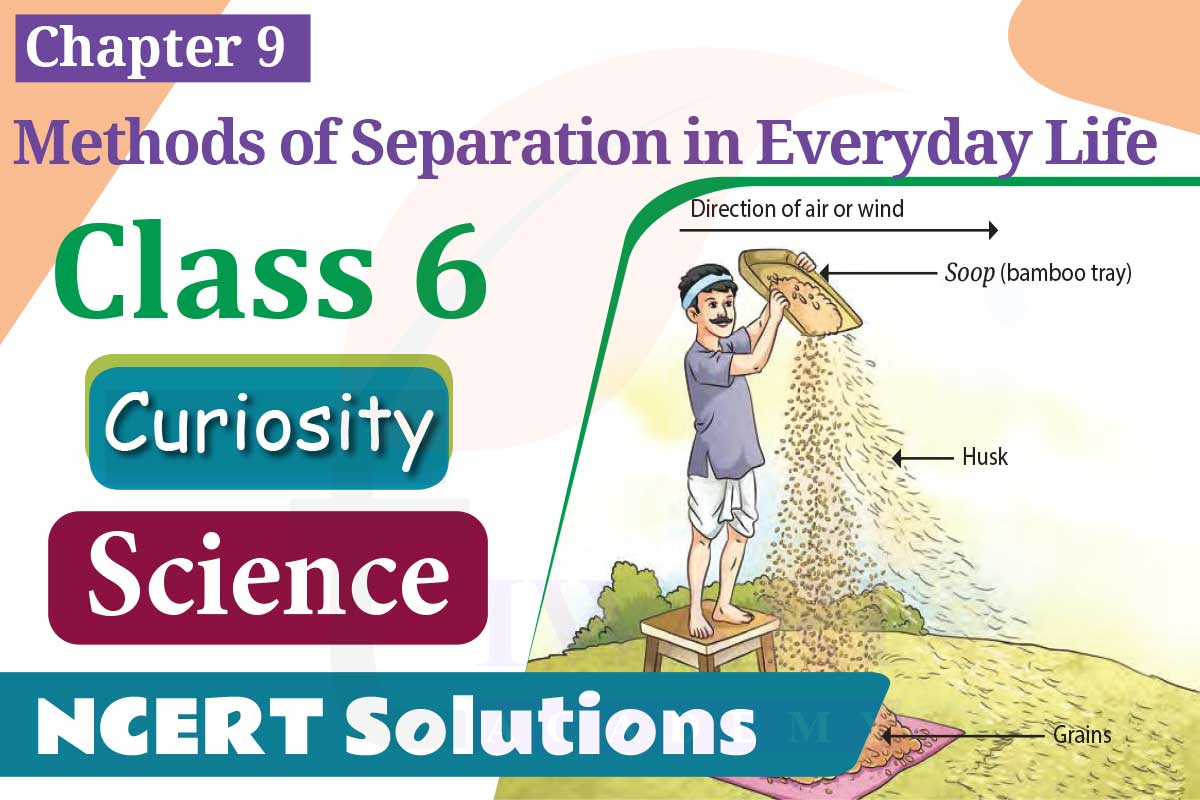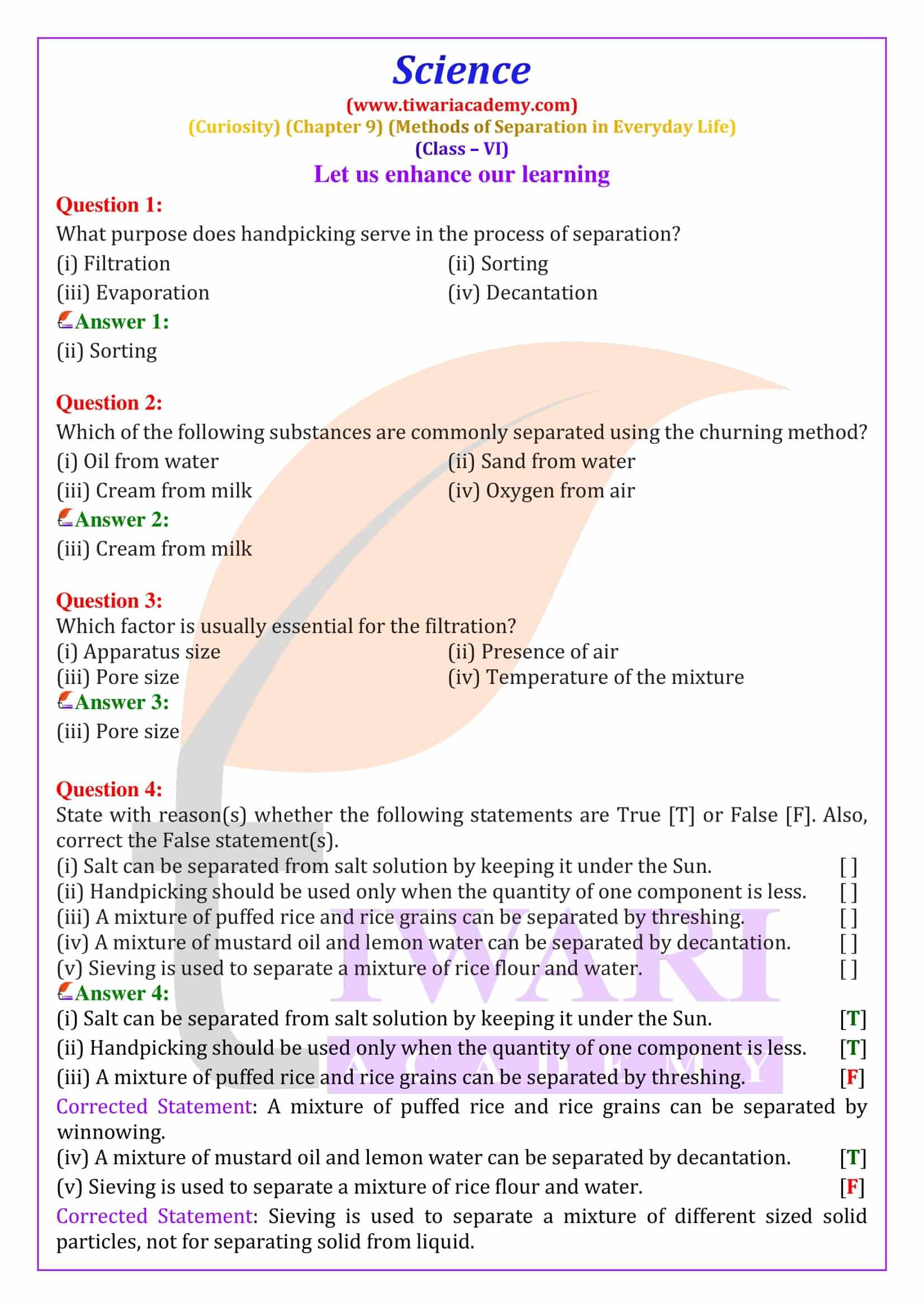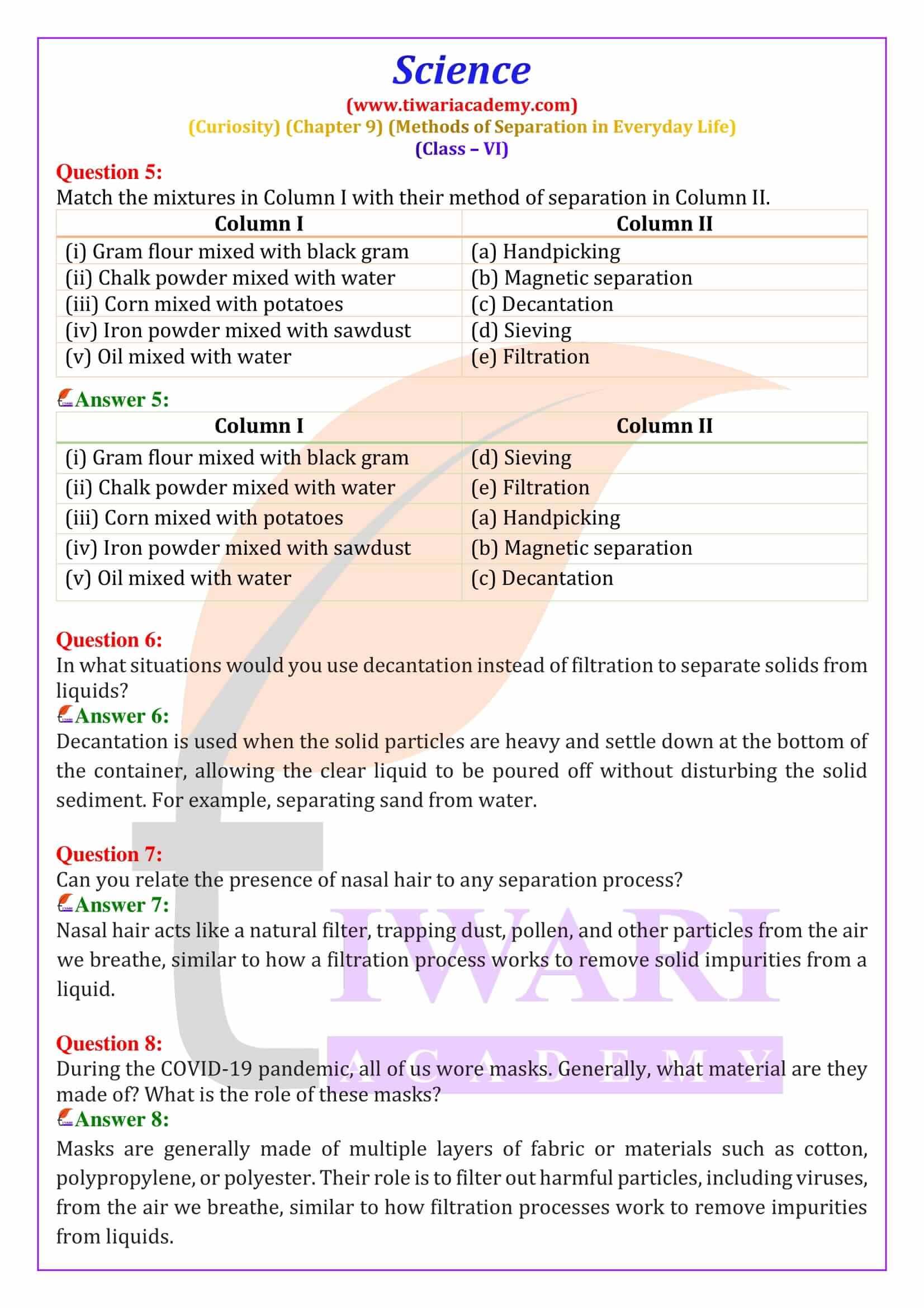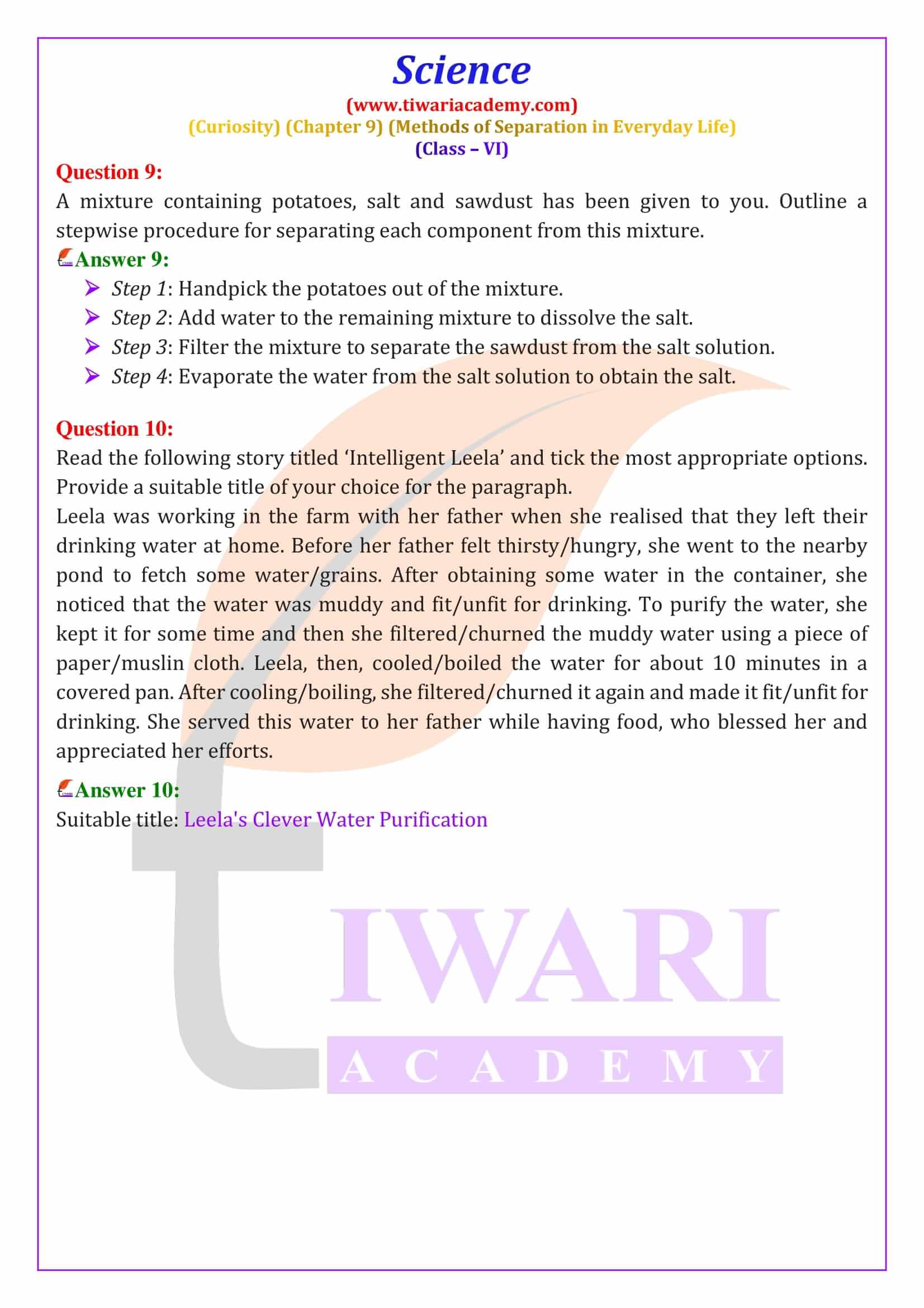NCERT Solutions for Class 6 Science Curiosity Chapter 9 Methods of Separation in Everyday Life revised for session 2025-26. The answers and explanation of question given here are based on new addition NCERT books.
Class 6 Science Curiosity Chapter 9 Methods of Separation in Everyday Life
Methods of Separation
Malli and Valli’s summer vacation begins with a visit to their grandmother’s house in Haryana, where they observe the traditional practice of separating grains from impurities. This chapter introduces various methods of separation, each based on different principles such as size, weight, and magnetic properties. The children learn about the importance of these methods in daily life, ensuring the grains are clean and fit for cooking. Their grandmother explains the process of handpicking small stones from the grains, a simple but effective method based on visible differences.

Handpicking and Threshing
Handpicking involves manually separating undesirable substances from a mixture based on size, color, or shape. For example, small stones and husk are removed from grains by handpicking. Malli and Valli also witness threshing, where farmers beat wheat stalks to separate the grains. Threshing is essential in agriculture, especially in regions where mechanized methods are not available. The farmers’ use of simple tools and their communal efforts highlight the importance of teamwork and traditional knowledge in maintaining food quality.
Winnowing and Sieving
Winnowing separates lighter husk from heavier grains using wind or blowing air. This method, traditionally performed using a bamboo tray, is effective for separating components of different weights. Sieving, another separation method, involves passing a mixture through a sieve to separate particles based on size. Valli’s experience of sieving flour to remove bran exemplifies how sieving ensures the purity and quality of food products. These methods are crucial in both household and agricultural settings, ensuring that the final product is free from unwanted materials.
Evaporation and Sedimentation
Evaporation is a process where a liquid is converted into vapor, leaving behind solid components. This method is used to obtain salt from seawater, as seen during Malli and Valli’s visit to Ahmedabad. They learn that seawater is evaporated in shallow pits, leaving salt behind. Sedimentation and decantation involve allowing heavier insoluble particles to settle at the bottom of a liquid, which can then be decanted. This method is useful for separating mixtures like muddy water, ensuring that the liquid is clear and usable.
Filtration and Churning
Filtration separates insoluble solids from liquids using a filter medium. Malli and Valli observe this method while making tea, where a strainer removes tea leaves from the liquid. Filtration is essential in various applications, including water purification. Churning, another method they explore, separates butter from curd. The lighter butter floats to the top, while the buttermilk remains below. This process is vital in dairy production, showcasing how simple mechanical processes can yield valuable food products.
Magnetic Separation
During their visit to Shillong, Malli and Valli learn about magnetic separation. This method uses magnets to separate magnetic substances, such as iron nails from sawdust. Magnetic separation is widely used in industries to recycle and reuse scrap iron from waste materials. The children’s experiences throughout their journey demonstrate the diverse applications of separation methods, emphasizing their importance in daily life and various industries. The chapter 9 of 6th science, concludes by encouraging students to explore and apply these methods in their surroundings .




